RESEARCH ARTICLE
Khavinson Peptides: Unlocking the Genetic Code of Healing & Longevity
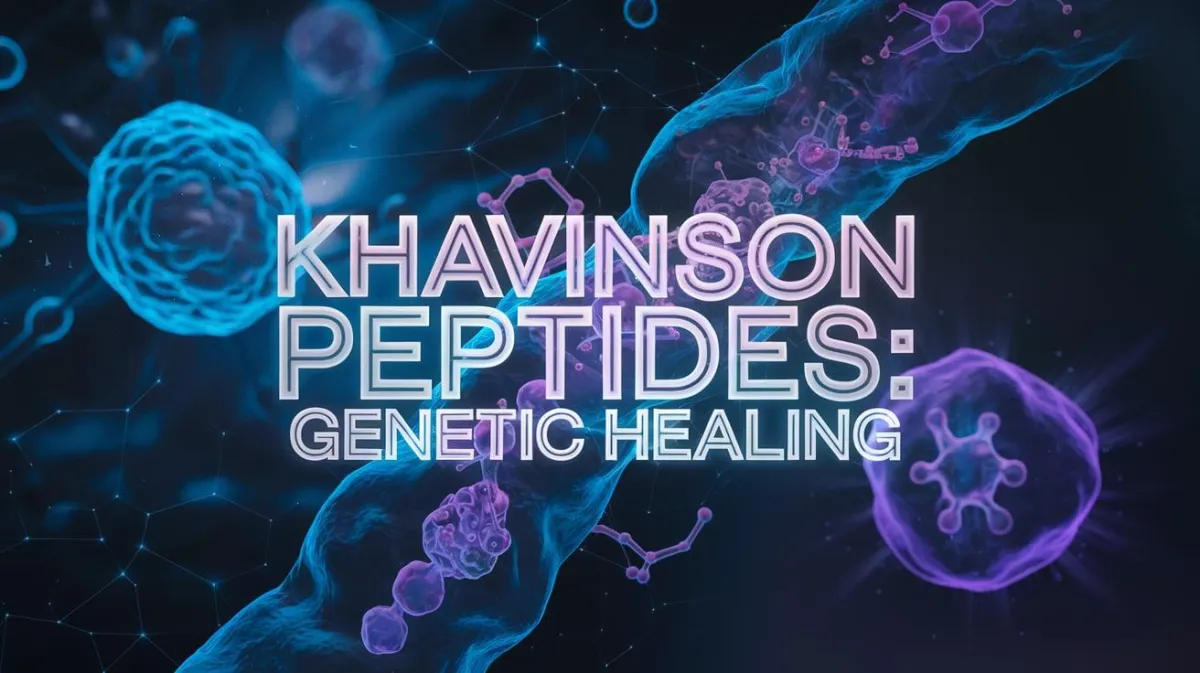
Introduction:
What if you could reprogram your DNA to restore youthful function at the genetic level?
This may sound impossible or futuristic, but it's not. Professor Vladimir Khavinson, has spent decades researching a breakthrough in epigenetics, one that has already been tested in elite athletes, military personnel, and longevity studies.
97% of your DNA is controlled by epigenetics. Your genes aren’t set in stone, they’re switches that turn on and off based on your environment, diet, stress levels, and even your emotions.
But what if you could flip those switches in your favor?
What if you could activate the genes of youth, healing, and peak performance so that your body functions in a more youthful and functional state? ¹, ²
There is a way. It’s called Khavinson peptides, a discovery born from Soviet military research and now backed by decades of scientific trials.
During the Cold War, Soviet soldiers stationed in nuclear silos and submarines suffered rapid aging and DNA damage due to extreme radiation exposure. Their telomeres shortened, cells broke down, and biological aging accelerated.
Desperate for a solution, the Kremlin enlisted Professor Vladimir Khavinson and his team. They identified short, naturally occurring peptides that could restore genetic function and reverse DNA damage.
They became a secret in Soviet military medicine used to increase soldier resilience, boost intelligence, and extend career longevity.
Fast forward a few decades, and Olympic athletes were using these same peptides. Russia’s Rhythmic Gymnastics team won 5 consecutive gold medals and according to Irina Viner, the team’s head coach, Khavinson peptides were a big part of their routine. Because these peptides could enhance recovery, optimize muscle efficiency, and sharpen mental focus by working at the genetic level.
Scientists have measured biological age reversal in human trials as well. One such study shows 2 peptides reversed biological age by 12.32 yearsˣ, and ongoing trials in humans led by Dr. Bill Lawrence, shows confirmed age reduction on the gold standard DNA methylation tests created by Steven Horvath.
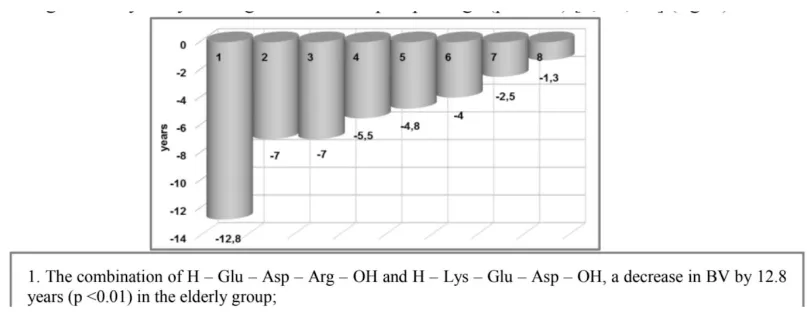
But in order to understand how these peptides work, we need to understand epigenetics.
Think of your genes like important documents stored in a folder on your desk.

If the folder is open, you can access the documents, read the instructions, and use them.
But imagine someone stacks heavy books on top of that folder. The more weight that’s added, the harder it is to open and eventually, it gets locked shut.
This is exactly what happens with aging. Over time, your DNA gets ‘buried’ trapped in tightly packed chromatin, making critical genes inaccessible.
And this is where Khavinson peptides come in. They literally ‘remove the weight’ releasing the trapped genes, allowing your body to read the instructions again.
With the folder open again, your cells can resume producing the proteins needed for regeneration, healing, and peak performance.
Look, understanding this at a deep level puts you ahead of 99% of people including many so-called ‘experts’ who have no clue how to actually apply peptide science. But that’s exactly why I put together My Peptide Mastery Course- a complete breakdown of how to use and dose 72 different peptides with precision that will allow you to heal your body, mind, and enhance longevity. Just go to peptides.link/mastery.
Khavinson peptides can assist your body’s own ability to regenerate organs ³, reverse signs of aging ¹⁶ and inhibit tumorigenesis ², ⁴. They have been shown to support brain function ⁵ ⁶, including in neurodegenerative diseases like Alzheimer's ⁷, improve mood ⁸ , support the management of diabetes ⁹, ¹⁰, ¹¹ ,¹², restore vision ¹³, ¹⁴, ¹⁵, activate your body's own mesenchymal stem cells ¹⁶ , and much more. All of this occurs through the power of your body's own DNA and the expression of its genes ¹⁷.
Our DNA forms the blueprint of who we are and consists of around 20,000 genes. These genes are small segments of DNA that provide instructions for building proteins ¹⁸. Throughout the day, various genes are switched on or off based on environmental and internal factors. When a gene is switched on, a process called transcription occurs. The first step of transcription is the stimulation of RNA polymerase which is like a "manufacturing plant" that produces that gene's corresponding protein. This protein can then perform a wide range of biological functions, whether in a specific tissue, multiple tissues, or systemically ¹⁹.

But what actually determines whether a gene is active or silenced at a given time? Its methylation status²⁰. Methylation involves the addition of a methyl group to a specific region of DNA, such as at CpG sites, where a cytosine is followed by a guanine in the DNA sequence. When one of these CpG sites is methylated, the associated gene is silenced. Around 70-80% of CpG sites in the human genome are usually methylated at a given time²¹. And it's not all or nothing either, as there can be partial methylations on a varying scale which determine how silenced or active a certain gene is.

We also have core promoter associated sites which are responsible for facilitating the initiation of a transcription. When a promoter is methylated, the associated gene is inactive. In normal conditions, less than 10% of promoter regions are normally methylated at a given time, which means the majority of the promoter sites are in fact active and capable of driving gene expression to varying degrees²².

It's important to understand that these Khavinson peptides work inside biological systems across the planet, whether humans, animals, or even plants, and they help to enhance the transcription of our genes ²⁵. They are highly bioavailable (even orally) due to their small size and ability to be taken up by receptors on the surface of cells in our stomach and gastrointestinal tract called LAT and PEPT transporters ²⁶. This confers a significant advantage compared to larger peptides which can only transport through a passive diffusion process, in the carbohydrate rich outer layer of the cell membrane, ²⁷ which is both slower, and less bioavailable.

The Khavinson peptides are important in countering the effect of aging, because as our cells begin to lose their identity, DNA damage accumulates, leading to the breakdown of larger structures as protein synthesis slows ²⁸. Even if we are chronologically young, various factors can lead to an acceleration of our biological aging, as we have seen in the dunedin studies ²⁹. Things like environmental factors, poor nutrition, or high levels of stress, which cause our bodies' adaptation response to be overwhelmed and for toxicity to occur ³⁰.
Now, let's take a closer look at how these peptides optimize DNA and cellular function. Inside our cells we have DNA present in the nucleus. This DNA is in the form of chromosomes which are the highly condensed, organized form of chromatin, made up of DNA wrapped around histones, so they can fit within the nucleus of the cell ³¹.
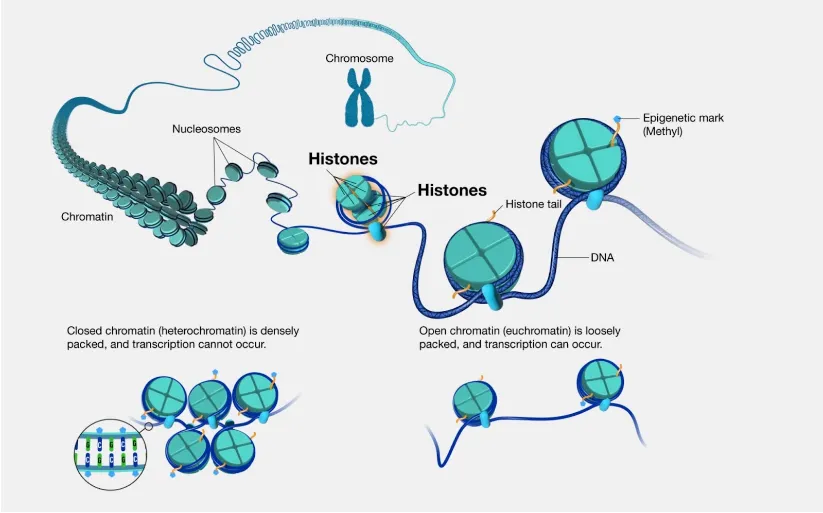
In the image above you can see our DNA, which includes epigenetic markers such as methylation patterns. These can be determined with tests like DunedinPACE²⁹ or horvath clock ³². We also have histone proteins, which package DNA into chromosomes. What's particularly important is that histones can regulate how tightly or loosely the chromatin is packed. When it's too tight (heterochromatin) genes become harder to access. This is like the analogy I gave of weights on a folder. This is often observed with aging or after many cellular divisions ³³.
On the other hand, when the chromatin is loose (euchromatin), genes are more accessible, and this is something peptides can help achieve ³⁴, ³⁵, ³⁶, ³⁷, ³⁸. This is like the analogy of the weights being removed from the folder.
However, this is not the only way they can exert beneficial effects on gene transcription. One example, is the fact that Livagen, a peptide from the liver, can increase protein synthesis in both young or old hepatocytes ³⁹.
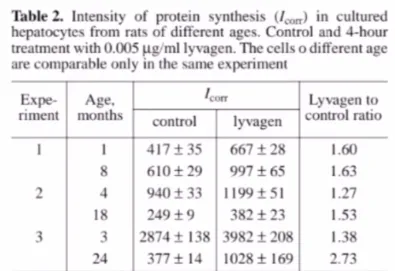
This is due to the peptide's ability to directly activate gene transcriptions by binding within promoter regions of the DNA and initiating RNA polymerase, which transcribes the proteins that are coded by that gene. For example, Pinealon and Vilon bind to specific regions within the FNDC5 gene in various regions, which can be seen in the image below ⁴⁰.
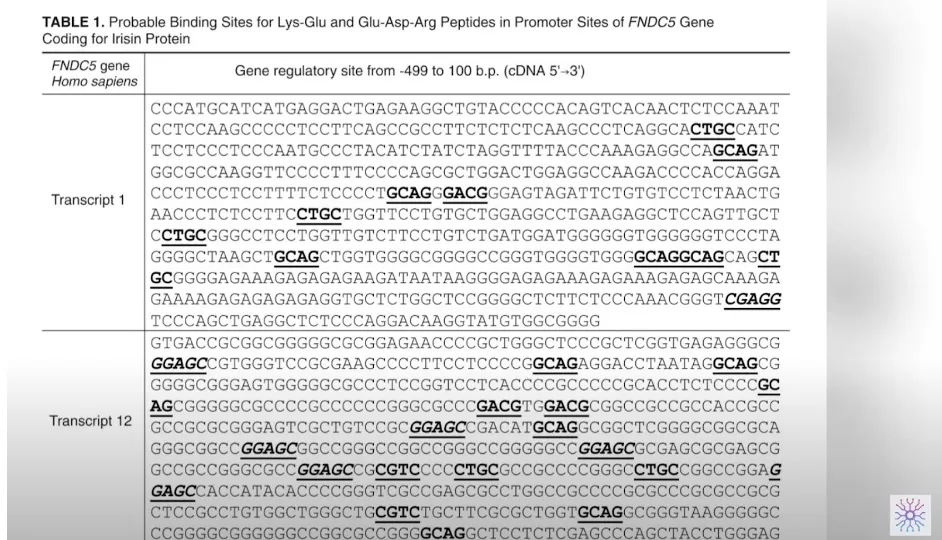
In this case, FNDC5 codes for irisin ⁴¹. Irisin has been shown to increase telomerase, which extends the protective ends of our telomeres and allows for more cellular decisions to take place, AMPK and SIRT1 ⁴², which improve mitochondrial functioning and muscle growth ⁴³ and support longevity and anti-cancer processes ⁴⁴.
However, there are many nuances with these peptides, as for example, epitalon also activates telomerase, however it does so through the TERT gene promoter directly ⁴³. Epitalon does not activate irisin ⁴⁰.
Conclusion:
Khavinson peptides primarily restore gene expression to optimal levels through histone modifications and DNA methylation. In cases of excessive gene activity, they may suppress overexpression through targeted chromatin tightening, and thus have a biphasic effect.
They also bind directly to gene promoters, and alter gene expression. Through these mechanisms, they act like signalling molecules to assist your body’s natural healing, regeneration, and anti aging processes. Unlike some other peptides, Khavinson peptides are highly bioavailable when taken orally due to their ability to bind to LAT and PEPT transporters on cell surfaces.
While this article focused on the epigenetic effects of Khavinson peptides, each Khavinson peptide offers unique, targeted effects on various genes and biological processes. For a deeper understanding of these effects, including the specific genes influenced by each peptide, Peptide Science Institute will be providing comprehensive mechanistic overviews. Although Professor Khavinson has published over 700 papers, there is no complete overview of each individual peptide including its downstream mechanisms presented in the literature yet. We have addressed this gap with our Peptide Mastery Course, the first and only course in the world that not only covers all 41 Khavinson peptides but also includes an additional 31 peptides, bringing the total to 72. It’s scientifically accurate, designed for real-world use, and teaches the exact application strategies that leading experts have failed to figure out.
If you’ve been trying to piece together information from random sources, let me save you years of frustration. Inside Peptide Mastery, you’ll get access to over 50 precision peptide protocols, quick reference guides, cheat sheets, and over 400 citations, all structured for rapid mastery. Just go to peptides.link/mastery.
And if you want personalized, high-level guidance, you can check out our Health Transformation Program. Both Dr. Ali Mazloum and I work with people who have been misdiagnosed, dismissed by doctors, or simply haven’t found answers anywhere else. We routinely fix issues that doctors call ‘impossible’ because we stay up to date with some of the most hidden health secrets. To get a health transformation-
https://scientificaugmentation.com/transformation
- Brenden Henry
March 5th, 2025
Peptide Science Institute
